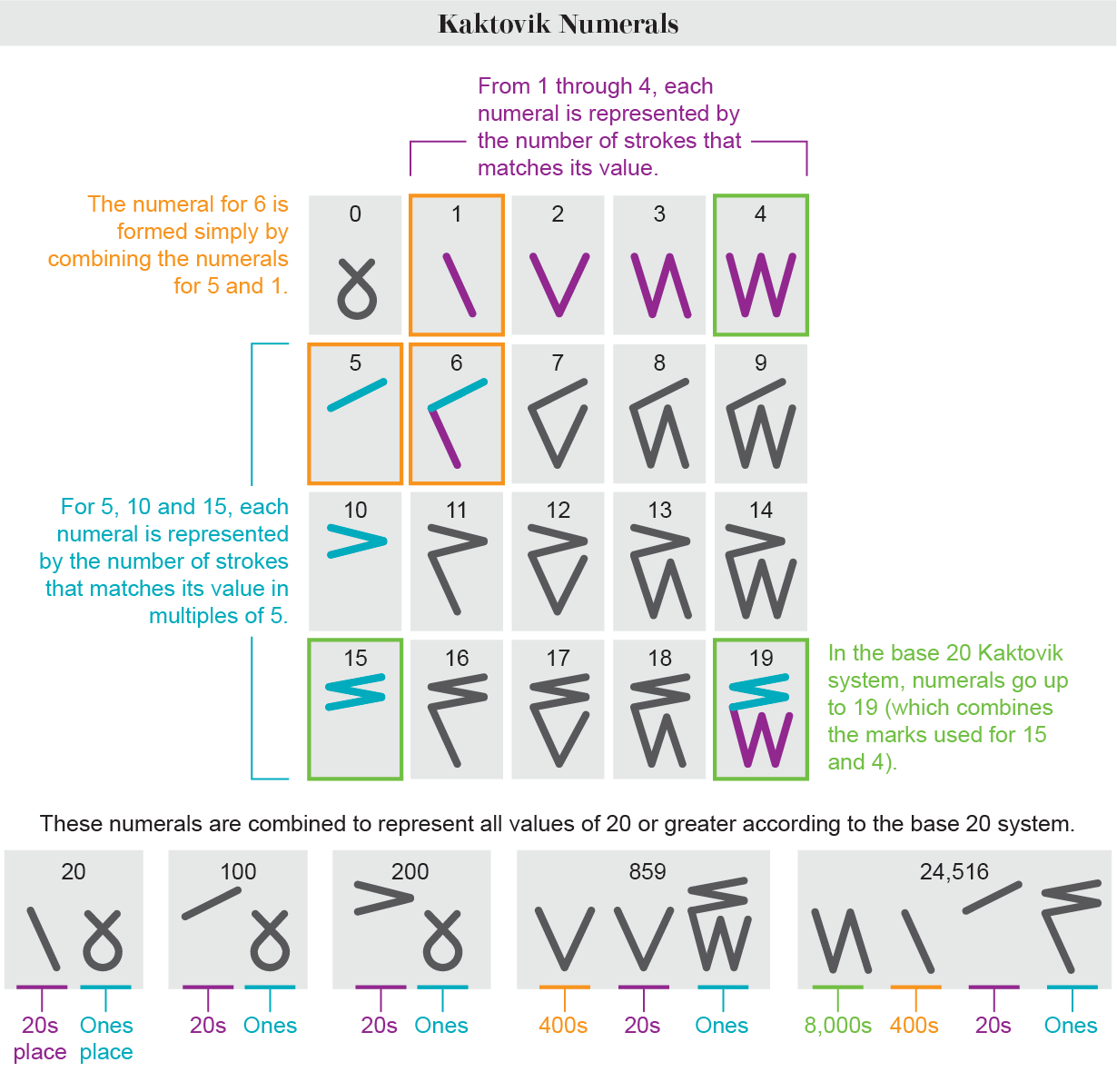A visually intuitive numeric system was about to be forgotten until UC Berkley Linguists and Silicon Valley techies came forward to rescue it.

What number do you get while subtracting 3 from 18? 15. How did you do it? With MENTAL operations that your math teacher taught in the elementary schools.
But what if you could do it VISUALLY?
Let’s assume 18 is visually represented as three vertical strokes, mounted with three horizontal strokes. 3 is made up of three vertical strokes only. And 15 is another three horizontal strokes.
Then, you just look at it, eliminate the three vertical strokes from 18, and visualize the triplet horizontal strokes only. That is 15. Voila!
That’s how Kaktovik numeric operations function.
The system has created numbers with carefully positioned strokes and is much more visually intuitive than the ubiquitous Hindu-Arabic numerical systems.
In the Alaskan Inuit tribe, this number system has been in use for a long time.
The numerical system was adopted for oral counting and concerns the human body.
For instance, one hand has 5 fingers, and two of them consist of 10. Then, all total we have 20 fingers collectively across hands and toes.
Similarly, Kaktovik numerals count in the multiples of 5s, 10s, 15s, and 20s. In the group of 5s to be precise.
Then, how 12 would be represented? The first 10 would be written with a set of strokes, then, 2 would be added with another bunch of strokes. That’s how numbers that can’t be divided by 5 are represented.
The US schools have tried to suppress the use of the Iñupiaq language of Alaskans for a while now. Henceforth, the Kaktovik numeric system is part of the same language.
“First violently, then quietly”, writes Scientific American.
The system was about to go extinct until UC Berkley linguists came to rescue it.
In Unicode version 15.0, the Iñupiaq language has been incorporated by Silicon Valley techies and UCB linguists. In this way, the written language and its numeric system have been digitized.
Now, Inuit students won’t have to rely on images and writings to visualize their calculations. Computers would soon do it for themselves.
The Hindu-Arabic numerals have long dominated and are often at the expense of the culture of various tribal numerics.
With intervention of the technology, linguists are hopeful that indigenous communities would be empowered when it comes to education in their native languages.